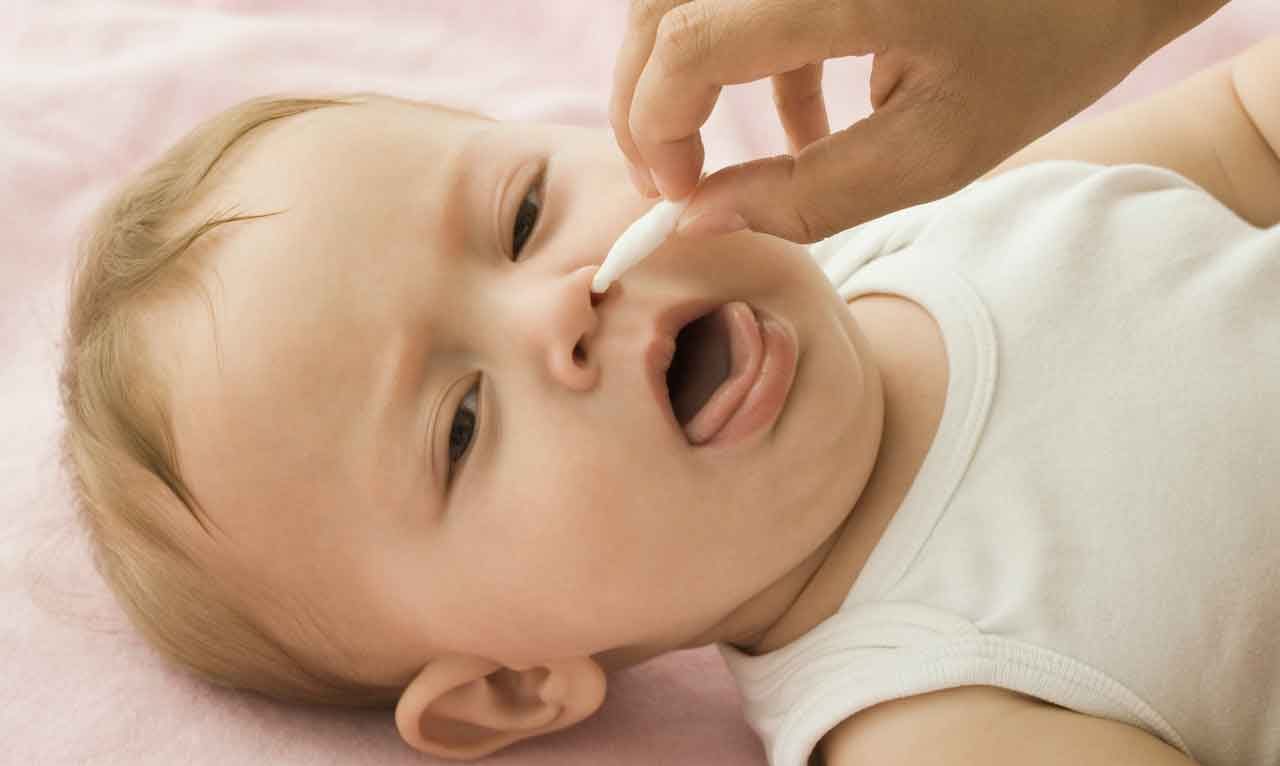How to Get Rid of Congestion in Your Baby

How to get rid of congestion in your baby when cold medicines aren’t an option.
It’s hard to watch your baby struggle to breathe through a stopped-up nose. Infants are too little to blow their own noses, and cold medicines aren’t recommended for them. So what can you do to help your baby breathe easier? Here’s a guide to congestion remedies for the littlest noses.
Use saline and suction
One safe way to clear out your baby’s clogged nose is with saltwater (saline). Make your own saline solution by mixing ¼ teaspoon salt with 1 cup of lukewarm water, or buy premade infant saline drops at the drug store. Every few hours, spray two drops of saline into each of your baby’s nostrils, then use a bulb syringe to gently suction out the mucus. To do this, squeeze the bulb of the syringe first. Then place just the tip into your baby’s nose and release the bulb to draw out the mucus. After each use, wash the tip of the syringe with warm water and soap to avoid re-infecting your baby.
Turn on a vaporizer
Before naps or bedtime, turn on a cool-mist vaporizer in the nursery to prevent baby’s nasal passages from getting too dry. “Humidifiers add moisture to the air to make breathing easier,” says Andrew Hotaling, MD, FACS, FAAP, a pediatric otolaryngologist at Loyola University Medical Center. “Make sure you properly clean the humidifier regularly so you are not blowing mold or mildew into the air, which can further cause illness.”
Give extra fluids
“The baby is losing moisture from the congestion. Make sure you are giving lots of appropriate liquids,” Hotaling says. Extra fluids will thin mucus, making it easier to remove. Water, fruit juice, and infant electrolyte solutions are the best options. Offer these drinks in between regular breast milk or formula feedings.
Elevate the crib
To give your baby a better angle through which to breathe, elevate the head of the crib mattress slightly. Put a pillow, folded towel, or wedge under the mattress (never inside the crib because of the risk for SIDS) to raise it.
Cold treatments to avoid
Never give an over-the-counter cold medicine to children under age 4 — even if it’s labeled “Children’s.” These drugs haven’t been shown to help infants and toddlers, and they can have potentially serious side effects in this age group.
Also avoid using vapor rub on babies. Although these products are considered safe for children over age 2, an animal study suggested the ingredients might irritate infants’ airways, leading to even more mucus production and breathing difficulties. “Infants and young children have airways that are much narrower than those of adults, so any increase in mucus or inflammation can narrow them more severely,” said Bruce K. Rubin, MD, FCCP, the study’s lead author and a pediatrician at Wake Forest University School of Medicine in Winston Salem, NC.
When to see your doctor
Even in the youngest patients, most colds will clear up on their own within a few days. If your child is still congested after two weeks, is running a fever, or shows signs of dehydration (fewer wet diapers or no tears), call your pediatrician. “Also see the doctor if the baby refuses to eat or drink or experiences difficulty with swallowing,” Hotaling said.
Updated:
March 30, 2020
Reviewed By:
Janet O’Dell, RN